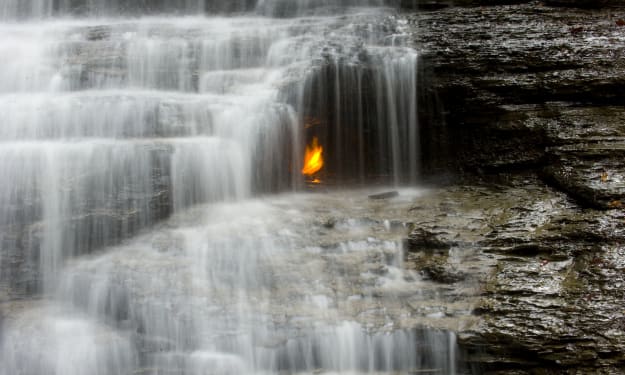Exploring the mysteries of our solar system has long been a fascination for scientists and enthusiasts alike. One celestial body that has captured our imagination since its discovery is Pluto. When NASA's New Horizons spacecraft passed by Pluto, it provided us with unprecedented close-up images, revealing fascinating features such as ice volcanoes, which are unique to Pluto and not found elsewhere in the solar system. However, Pluto's enigmatic neighbor, known as Dova, holds its own mysteries. With the deployment of the James Webb Space Telescope, our gaze has shifted towards other objects in the Kuiper Belt, such as Eris and Make Make, uncovering evidence that hints at the possibility of life existing on these distant worlds.
Recent discoveries stemming from observations made by the James Webb Space Telescope have illuminated new aspects of Trans-Neptunian Objects (TNOs). A study published in January 2024 detailed the phenomenon of interstellar dust particles being propelled away from the Sun due to radiation pressure. This finding suggests that some of the objects and dust particles we observe in the Kuiper Belt today may have originated within our solar system, adding complexity to our understanding of its dynamics.
Spectroscopy, a powerful technique used to analyze the composition of distant objects, has provided further insights into the nature of the Kuiper Belt. Despite expectations of elemental similarity among Kuiper Belt objects, researchers have noted a wide array of colors in their spectrum readings. This diversity raises questions about the composition and formation processes of these objects, hinting at the influence of unique elements or external factors such as cosmic radiation.
Beyond mere speculation, recent observations have hinted at the potential presence of life on select TNOs. This revelation is not mere clickbait; rather, it suggests the existence of life forms akin to those that thrived on Earth billions of years ago. Interestingly, this discovery was not made on Pluto but on objects such as Eris and Make Make, situated beyond Pluto's orbit.
When the James Webb Space Telescope turned its gaze towards the Sun, it captured intriguing activities on these distant objects, previously thought to be inactive. Dr. Christopher Glynn, a researcher at the South West Research Institute, analyzed this data and published his findings in the scientific journal Ecus. His research unveiled the presence of methane and hydrogen in the atmospheric and surface compositions of Eris and Make Make, indicating potential habitability.
The discovery of methane and hydrogen challenges previous assumptions about the geological history of these objects. Furthermore, the calculation of the Duty M Hydrogen Ratio from the James Webb Space Telescope's data provides additional insights into the origin and ongoing processes on these celestial bodies. This ratio, which involves an isotope of hydrogen, hints at complex interactions and potentially life-sustaining conditions.
In conclusion, the exploration of TNOs like Eris and Make Make has opened new avenues for understanding the diversity of our solar system and the potential for life beyond Earth. The revelations stemming from the observations made by the James Webb Space Telescope underscore the importance of continued exploration and research in unraveling the mysteries of the cosmos. As we continue to delve deeper into the unknown reaches of space, we may yet uncover further secrets that redefine our understanding of the universe and our place within it.
The James Webb Space Telescope has been instrumental in unraveling the mysteries of our universe, and its exploration of trans-Neptunian objects has yielded remarkable insights. A recent study, published in the IOP Science journal on January 25, 2024, shed light on the dynamic interplay between interstellar dust particles and radiation pressure emanating from the Sun. These findings suggest that objects observed within the Kuiper Belt may have once been active components of our own solar system.
Furthermore, spectroscopic analysis of Kuiper Belt objects has revealed a surprising diversity of colors, raising questions about the elemental composition of these distant bodies. While this variance could potentially indicate unique elemental signatures or the influence of cosmic radiation, it also hints at the possibility of life on select objects within the Kuiper Belt.
The discovery of potential life forms extends beyond Pluto to Eris and Makemake, two dwarf planets located beyond its orbit. Previously considered dormant, recent observations by the James Webb Space Telescope have detected signs of activity on these distant worlds. Dr. Christopher Glynn of the Southwest Research Institute analyzed this data and published his findings in the scientific journal "Ecus."
Methane and hydrogen are prevalent in the atmospheric and surface compositions of Eris and Makemake, a fact that has long been known. However, what sets these observations apart is the revelation of a significant ratio of deuterium to hydrogen (D/H ratio) in methane samples collected from these dwarf planets. This ratio serves as a crucial indicator of a planetary object's geological history and potential for sustaining life.
While the implications of these findings are profound, further research and exploration are needed to confirm the presence of life on Eris and Makemake. Nevertheless, the discovery opens up new avenues for understanding the origins and evolution of celestial bodies within our solar system, igniting hope for the discovery of extraterrestrial life forms beyond Earth's confines.






Comments
There are no comments for this story
Be the first to respond and start the conversation.